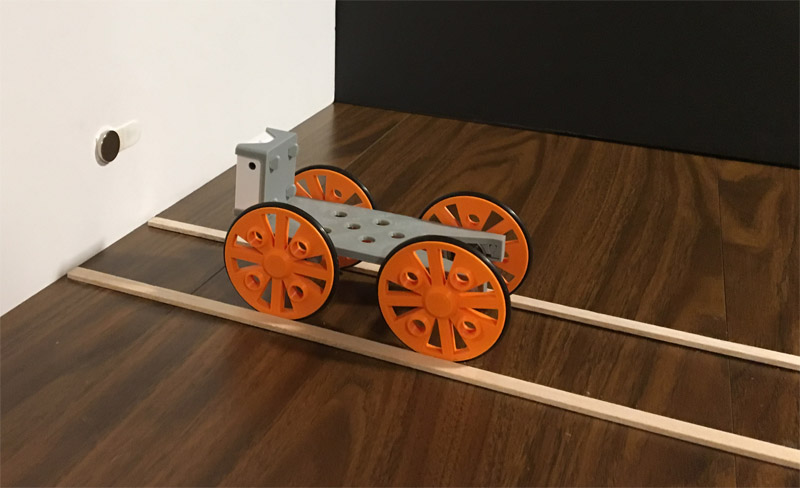Introduction
Magnets, from the traditional alnico bar magnets to the modern neodymium magnets, have been of interest to most everyone for decades. The attraction or repulsion of two such magnets when brought close together is particularly interesting. This can be expressed by making quantitative measurements relating magnetic field strength to distance from the magnet.
Phyphox (physical phone experiments) is an app developed at the 2nd Institute of Physics of the RWTH Aachen University in Germany. The author of this lesson has been working with a pre-release Android version of this app. The app uses BLE technology to transfer data from multiple Voyagers to the Phyphox app. A public Android version of the Phyphox app has since been made available. The file InverseCubeMagField.phyphox accompanies this lesson and can be uploaded into the Phyphox app.
This lesson makes use of Voyager to measure distance and magnetic field strength. Distance is measured by Voyager’s rangefinder. Magnetic field strength is measured by Voyager’s magnetometer. Data is plotted in real time using Phyphox software. One advantage of Phyphox over the PocketLab app is that it can directly plot magnetic field strength versus distance. In addition, it can also export this data without reference to the time variable.
Magnetic Experiment Setup
The figure below shows the setup used in this experiment. Voyager has been mounted to a PocketLab HotRod. The rangefinder is aimed toward a piece of white foam board. The magnet has been attached to the foam board with its south pole facing Voyager. Balsa wood sticks have been taped to the table, providing a track to keep Voyager on the straight and narrow. The cart is initially placed with Voyager approximately 5 cm from the foam board. It is then given an easy push toward the left. Phyphox then records both distance and magnetic field strength data as the cart slows down to a stop.


